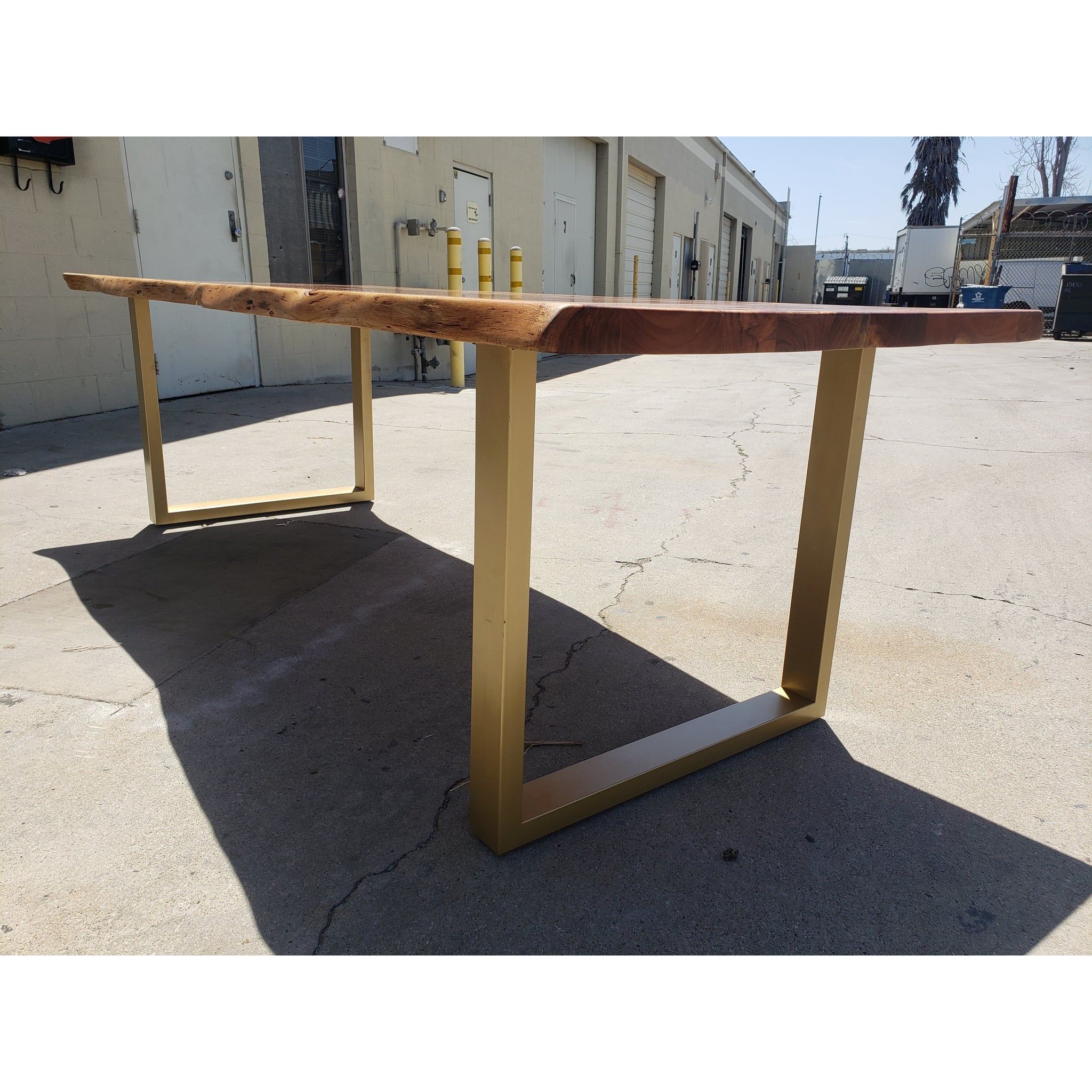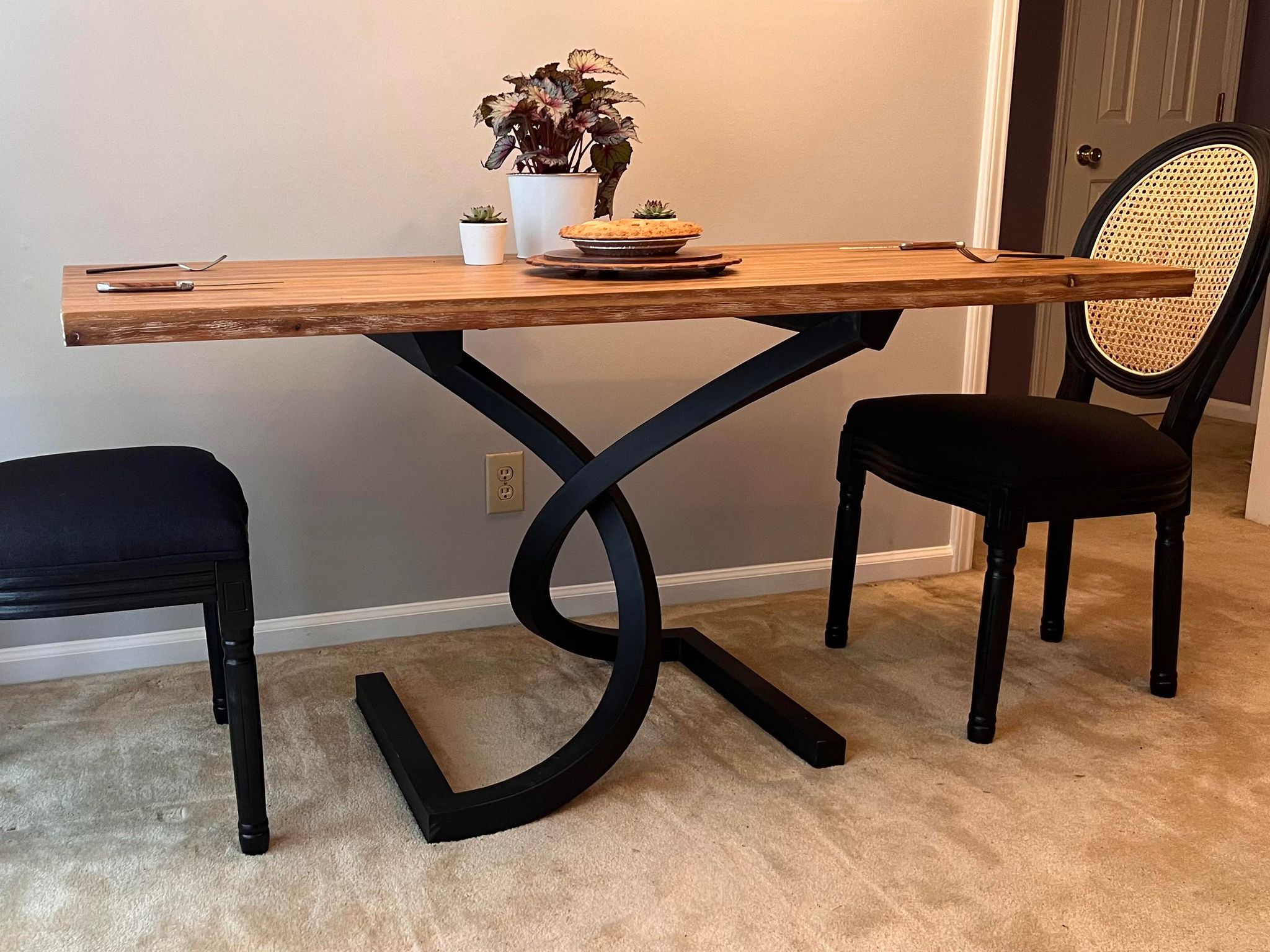Discover Versatile Styles for Custom Dining Table Legs Wood Solutions
Key Factors to Bear In Mind for Eating Table Legs Timber Choices
When choosing timber for eating table legs, numerous vital variables warrant careful factor to consider to make certain both functionality and aesthetic allure. The choice of wood type, defined by its longevity and distinct grain patterns, plays an essential duty in the general layout and longevity of the piece.
Wood Types and Qualities
When choosing wood for eating table legs, it is important to understand the distinct qualities of different wood types. Various timbers supply distinctive benefits and drawbacks, influencing both the sturdiness and aesthetic appeal of the ended up product.
Hardwoods, such as cherry, maple, and oak, are commonly chosen for their strength and resistance to wear. Oak, understood for its excellent toughness, additionally features a popular grain that can include character to the table. Maple provides a smooth surface and is much less susceptible to warping, making it a dependable option for functional furnishings. Cherry timber, with its rich color that grows gradually, offers a glamorous appearance however might call for even more maintenance to avoid scrapes.
On the various other hand, softwoods like want and fir are more economical and easier to work with, yet they are less resilient than woods. Pine is lightweight and includes a cozy, rustic appearance, making it a popular choice for laid-back eating setups. Nevertheless, it is more prone to damages and scrapes.
Comprehending these qualities will certainly aid in making an informed decision to make certain the legs of the dining table satisfy both visual and practical requirements.
Grain Patterns and Aesthetics
The timber's grain is not just an aesthetic feature; it imparts a special individuality and beauty to each item. Different timber types display unique grain patterns, varying from the straight lines of maple to the intricate swirls of oak and the striking figure of walnut.
Moreover, the orientation and scale of the grain can influence the perceived dimension and beauty of the table. Larger, a lot more noticable grains may offer a bold, dramatic result, while finer, subtler grains can produce a fine-tuned, downplayed look. In addition, the completing process can even more boost these patterns, highlighting the all-natural appeal of the wood and highlighting rich colors.
Eventually, the choice of grain pattern need to integrate with various other design components, such as the tabletop and surrounding furniture, guaranteeing a natural aesthetic that elevates the eating experience. Thoughtful selection of timber grain not just adds to the table's elegance however also mirrors the owner's preference and style.
Toughness and Strength
The sturdiness and strength of eating table legs are paramount factors to consider for making sure longevity and security in any type of eating space. Picking the right timber is crucial, as various species display varying levels of durability. Woods such as oak, maple, and cherry are frequently chosen for their intrinsic stamina and resistance to put on. These products not just endure daily usage yet additionally support heavy lots, making them suitable for eating tables that regularly fit numerous diners. Dining Table Legs Wood.

Inevitably, purchasing top quality wood and robust building and construction methods will produce a table that stands the test of time, while giving a trustworthy foundation for countless dishes shared amongst friends and family. Focusing on resilience and stamina guarantees that your eating table continues to be functional and visually pleasing for years to find.
Upkeep and Treatment
Appropriate maintenance and treatment are vital for protecting address the toughness and strength of dining table legs made from timber. Routine cleansing is necessary; making use of a soft, moist towel ensures that dust and debris do not gather, which can lead to scratches and dullness. It is a good idea to prevent extreme chemicals or unpleasant products that could damage the surface.
Additionally, using an appropriate timber polish or wax periodically can aid maintain the sheen and safeguard the wood from wetness and spills. However, it is essential to adhere to the maker's recommendations regarding the type of product to make use of, as particular finishes might react negatively to certain chemicals.
Humidity and temperature variations can likewise affect wood table legs, creating them to warp or split. It's best to position the table far from straight sunlight and heat resources. Resolving these without delay can prevent additional damage. if the table legs have any type of damages or scratches.
Finally, periodically evaluating the joints and screws for rigidity is essential to maintain structural integrity (Dining Table Legs Wood). By sticking to these maintenance methods, company website house owners can ensure their wooden table legs stay functional and appealing for many years ahead
Environmental Considerations
When choosing wood for eating table legs, it's necessary to take ecological considerations right into account. The sourcing and sustainability of wood are critical in minimizing environmental effect. Choosing wood from qualified resources, such as those recommended by the Woodland Stewardship Council (FSC), ensures that the timber is gathered responsibly, advertising woodland preservation and biodiversity.

Additionally, regional sourcing of wood reduces transportation discharges, supporting local economies while lessening ecological effect. It is also advisable useful link to be knowledgeable about the wood's treatment and ending up processes, as specific chemicals can be hazardous to both human wellness and the setting. By focusing on sustainable wood selections, consumers can add to ecological conservation while enjoying the longevity and charm of their table legs.
Final Thought
Finally, choosing timber for dining table legs demands careful consideration of various elements, consisting of wood types, grain patterns, and sturdiness. The visual appeal of distinct grain patterns can improve the overall style, while the strength of hardwoods makes certain long life. Upkeep demands and environmental sustainability additional impact wood choices, emphasizing the significance of sourcing from accredited or reclaimed materials. A notified selection process eventually adds to a practical and aesthetically appealing eating space that lines up with sustainable methods.
When picking wood for eating table legs, numerous essential factors require careful consideration to ensure both functionality and aesthetic appeal.Proper upkeep and care are vital for protecting the longevity and strength of eating table legs made from timber.When choosing wood for eating table legs, it's necessary to take environmental factors to consider into account. By focusing on lasting timber options, consumers can contribute to environmental preservation while delighting in the durability and beauty of their dining table legs.
In verdict, choosing wood for eating table legs demands careful factor to consider of numerous elements, consisting of wood types, grain patterns, and sturdiness. Dining Table Legs Wood.